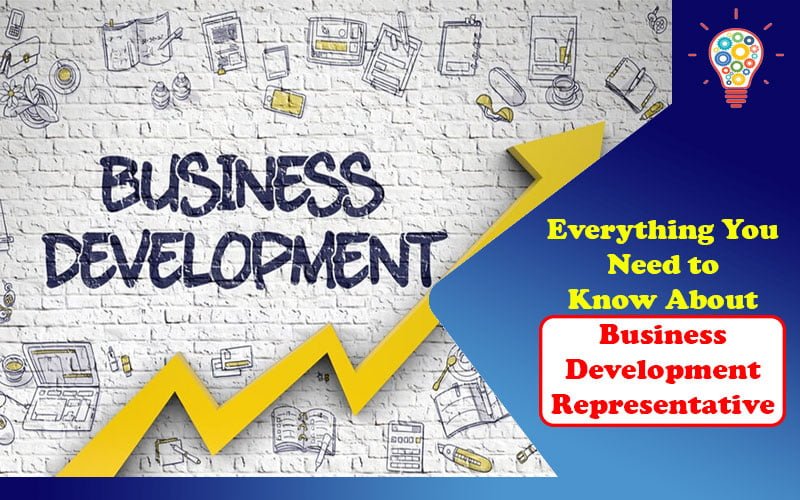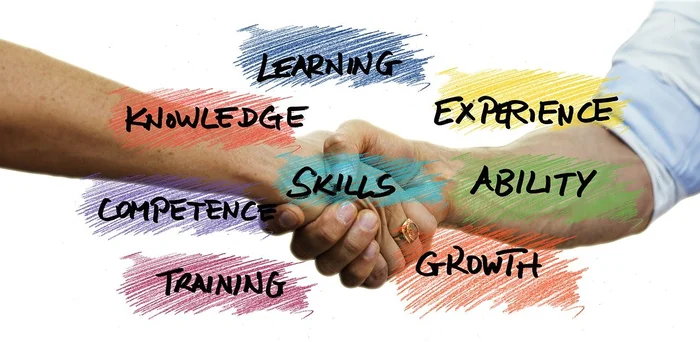The process of selling services to clients is always a multi-stage and complex pipeline that requires the involvement of several teams of specialists who will be responsible for specific sales stages. One of these teams is the Business Development Representative team. These professionals are a vital part of any business, and if you want your business to achieve new sales figures, you just need to get them into your team.
However, who are these specialists, what is their area of responsibility, and why are they so important? You are lucky that you stumbled upon these lines since we will analyze these concerning questions in our article. By the end of the reading, you will perfectly understand who the business development representative is and whether your business needs it. So, without further ado, let’s get started.
Table of Contents
Business Development. What is it all About?
Before dealing with the responsibilities of this specialist, you should, first of all, find out what Business Development at its core is.
In general terms, this definition includes various strategies aimed at developing business efficiency and achieving new milestones in sales aspects. Among these strategies are various improvements to the lead-to-customer conversion process.
The main difference between business development representatives and direct sales is working with a cold customer base through calls, email networking, and so on. In addition, BDRs do not close deals. Roughly speaking, they warm up the lead, classify it and pass it into the hands of sales who are already selling services.
Main Differences of Business Development Representative and Sales Development Representative
Many entrepreneurs who are just starting to staff their sales department with personnel often confuse these two specialists, which is not surprising. They both work in the same department and are considered by many to be interchangeable, but this is not the case.
First of all, it should be said that these two specialists, although they work in the same department, are at slightly different stages of the pipeline.
A business development representative is looking for potential clients using a cold method. In addition, they qualify incoming clients from various sources (email newsletter, social networks, etc.) to transfer them up the chain (about the responsibilities and the areas of responsibility of the business development representative we’ll talk a little later in this article). Qualified leads are further processed by the department, while low-quality or irrelevant leads are eliminated.
In the meantime, leads verified and approved by business development representatives are sent to the sales development representative. This is followed by a series of calls and meetings with potential leads received from the business development representative. At these meetings, sales specialists try to find out the details of the clients’ requests, as well as their background, which will make it possible to understand the level of the client’s requirements and provide a clear consultation. Finally, once all leads are approved by the sales development representative, they are sent up the chain to higher-level specialists, namely account representatives (ARs) or account executives (AEs).
For businesses to operate effectively, ARs and AEs require a constant flow of potential customers in order to turn them into full-fledged business customers. Without a well-functioning lead approval process from a business development representative and a sales development representative, the sale of services slows down significantly, as ARs and AEs are forced to conduct business negotiations with customers who may not want to purchase the company’s goods or services. This can lead to the loss of many good customers and waste of valuable business time on irrelevant leads.
This is the whole difference between a business development representative and a sales development representative. BDR seeks and qualifies cold leads and transfers them to SDR, which clarifies the client’s requirements more clearly and transfers them to direct cooperation with the business.
Business Development Representative Area of Responsibilities
In general terms, business development representatives are the spearhead of the attack of your business. They turn disinterested potential customers into full-fledged users of your services, and they do it even if customers do not know if they need your services.
Even though these specialists are not involved in closing deals, their business benefits can hardly be overestimated. However, what tools are they using to convert disinterested leads into customers for your company? It is about time to talk about them.
Researching
The first thing business development representatives do is study the business’s target audience through familiarization with the existing audience of your business. An analysis of the existing audience helps to understand their needs and what they most often look for in the company’s services.
This approach helps them develop hypothetical communication channels and demographics of potential customers and makes it easier to hit the right cold leads. For example, during software development consulting, BDR must understand the pain points of the client’s business and offer the right technical services to help solve his problems.
Lead Generation
The next stage of business development work is a thorough collection of contact information and the formation of lead lists. Often the information that a business development representative lists include the following:
- Name of the cold lead
- The company in which the lead works or is managed
- Phone numbers
- Social networks
- Company contact details
This information greatly simplifies contacting a cold lead and allows a business development representative to choose where and how to communicate with the lead. The process of documenting it is extremely important as this list will be involved in the next step.
Cold Mailing and Calling
After processing and collecting information, a systematic process of connecting with leads begins through cold calls and mailing. Despite the fact that such a strategy is often condemned for intrusiveness and inefficiency, these are all great delusions. With a properly developed cold calling and mailing strategy, you will be surprised at what impressive results you can get.
Making Connections With Leads
A good business development representative is a lead connection master. Good communication skills allow you to calmly communicate both on the phone and in person with the lead and effectively find common ground that will help transfer the lead to the sales stage.
In this aspect, the main task of a business development representative is to unobtrusively pick up a cold lead and offer services to the company. In addition, the establishment of permanent connections and contacts helps the specialist not to lose potential leads with whom he has already worked and who can become full-fledged clients of the company in the future.
Social Selling
Another method of finding leads is working with social networks. The main strategy is to be active in various thematic groups on Facebook, LinkedIn, Twitter for constant communication with the target audience and smooth promotion of business services by increasing its authority in the eyes of other users.
On these websites, there are many cold leads who, at first glance, maybe completely uninterested in the company’s services. However, with the proper approach, finding the right language, a business development representative is able to find cold clients with whom it will be possible to work and cooperate in the future.
Leads Qualification
An important area of responsibility is the correct qualification of leads and verification calls to leads in order to make sure that they are suitable and ready for transfer to the sales stage. Calling each lead lasts from 10 to 40 minutes, after which BDR decides to transfer this lead to a meeting with a sales qualification.
As we said earlier, lead qualification is extremely important because, in the future, it saves a lot of time for upline specialists, who in the future will not need to work with uninterested leads.
Read Also: Custom Website Development – Is This the Best Approach for Your Brand?
Must-Have Skills for Business Development Representative
A professional BDR must have a certain set of skills to effectively perform the above duties. You should be aware of them, as this knowledge will help you in the future when hiring business development representatives for your team.
Out-of-the-box Thinking
Without a unique approach to cold lead and creativity, it is impossible to warm him up and not enough to make him want to continue collaborating with your business.
A business development representative can easily come up with an ideal proposal and a way to help a client’s problem, turning him from a disinterested cold lead into a potential client. In addition, thinking outside the box is a great tool for dealing with objections and minimizing lost customers.
Perseverance
Perseverance helps a business development representative not give up on the way to getting a full-fledged lead in the company’s piggy bank. After all, even the process of calling a list of leads can take a lot of attempts. One potential client and negotiations with him can take 5-10 attempts, and with such a workflow, it is very important not to give up and be as persistent as possible.
After all, if the business development representative himself surrenders ahead of time, how can the client understand that he really should use the company’s services since they will help his business or enterprise operate better?
Good Listening Skills
The better a specialist knows how to listen to a client, the easier it is to find important information about the prospects for cooperation with a client. The open questions they ask aim to ensure that the client gives as detailed an answer as possible, which will allow the specialist to pick out important details and offer an ultimate option to help the client using business services.
As a result, from the outside, it may seem that the business development representative is silent most of the communication with the client, and this will most likely be the case. However, such a dialogue strategy allows this specialist to get to the bottom of all the nuances of a potential client’s business and understand how you can help him and whether the client really understands what he wants.
Wrapping Up
As you can see, business development representatives are far from the last place in the chain of obtaining potential customers for businesses. Without these specialists, it will be more difficult for sales to find clients interested in business services. A business development representative is a bridge between a cold lead and selling a service, which is so necessary for every business for successful sales.
That is why you should not neglect this specialist when setting up your own sales department. By including it in workflows, you will significantly optimize the process of finding clients. In addition, the overall quality of leads will also grow significantly, which is extremely important if you want to provide your services to relevant customers who really need your services or products.
Author’s bio:
Vitaly Kuprenko is a technical writer at Cleveroad, a web and mobile app development company in Ukraine. He enjoys writing about tech innovations and digital ways to boost businesses.




